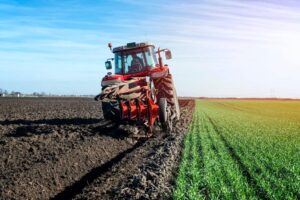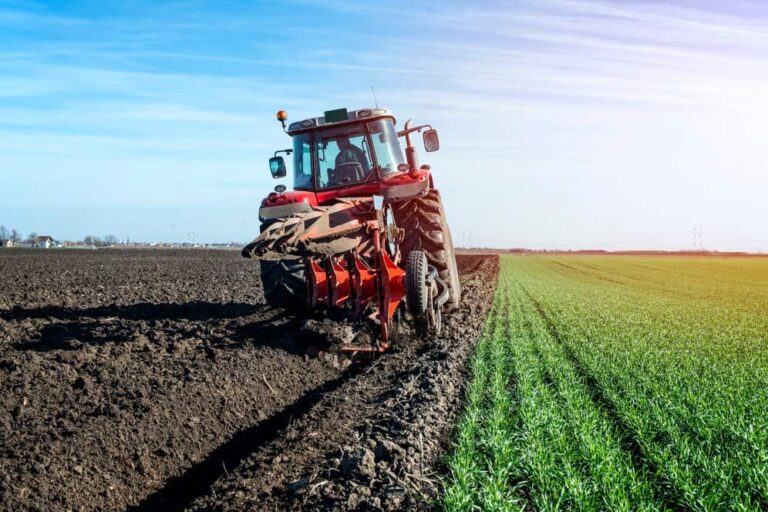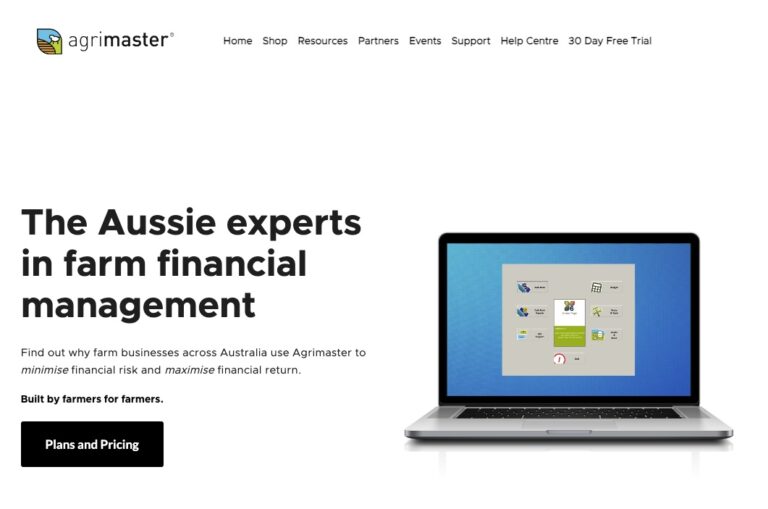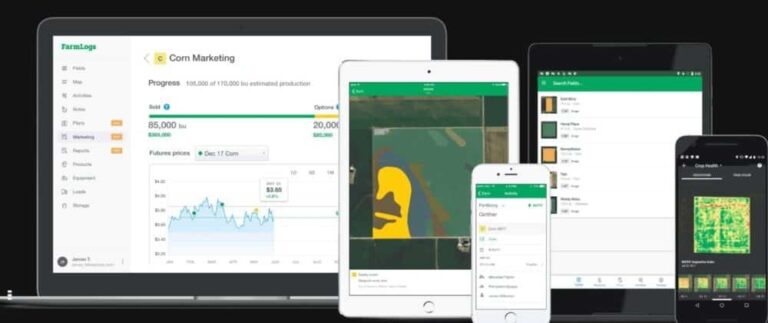Introduction
In the realm of agriculture, productivity hinges on the effectiveness of workplace solutions tailored for farmers. Integrating modern techniques and technologies is no longer a luxury but a necessity. This article delves into the transformative impact of farmers workplace solutions, shedding light on their role in boosting efficiency and productivity.
The Digital Transformation of Agriculture
Agriculture has been upgraded through modern digital technology in recent years, as it transforms the traditional ways of farming and improves the efficiency, productivity and sustainability of farming. This transformation takes place by incorporation of the state-of-art technologies into agricultural operations, which then provide farmers with the opportunity to make good decisions and managers of precision. The main breakthroughs are related to precision farming tools, smart irrigation systems, and satellite image utilization.
Precision Farming Tools
Precision agriculture relies on the application of such advanced technologies as GPS and data analytics, so different parts of the same crop production line as planting, fertilizing and harvesting, can be optimized. By precisely determining the location of each field and examining soil variations, farmers are able to use their inputs and activities specifically for different parts of the field achieving the best returns.
- Leveraging GPS Technology: The help of Global Positioning System (GPS) gathers the farmers to precisely mark field boundaries, obstacles as well as crop rows. This data serves as a guide to get to the root of precise planting and harvesting to avoid overlaps and wastage of resources;
- Data Analytics: High tech analytics software analyzes huge volumes of agricultural data using soil samples, weather trends and crop performance for example. Using this data, farmers will be able to recognise the patterns, forecast the future prospects and adjust their growing techniques. For instance, predictive analytics can predict the exact period of time when planting or applying ingredients should be done by considering the data of the past and the existing atmospheric conditions;
- Benefits: Precision farming gadgets provide to farmers many advantages, consisting of high crop yield, reduction in the input costs and better environmental management. Through smarter application of resources and reducing waste, farmers can maximize their potential profits as well as their contribution to the environment.
Smart Irrigation Systems
Smart irrigation systems utilize sensors, actuators, and mobile technology to precisely allocate water in agriculture. Thus, these systems give farmers an ability to track soil moisture levels, weather forecasts and crop water needs in real-time. This allows for improved irrigation scheduling and helping farmers with water conservation.
- Utilizing Sensors: The sensors being soil moisture sensors, weather stations and crop sensors are scattered across the fields in order to monitor the environmental condition and the crop health all the time. These sensors collect data that supports irrigation decisions making sure that water amount and timing are suitable for the crops;
- Mobile Technology: Smart irrigation system development is usually accompanied by apps for mobile phones and web-based platforms which help farmers to track their irrigation activities anywhere with an internet connection. This remote connectivity increases the level of operation efficiency and makes it possible for the farmers to carry out proactive management of irrigation systems even when they are away from the farms;
- Benefits: Smart irrigation systems give a number of benefits among which the most significant are increased water efficiency, decreased water wastage, and higher crop yields. Through the supply of water in the very areas of need and on time, these systems decrease the negative impacts of water scarcity and drought while at the same time promoting sustainable agricultural practice.
Drone and Satellite Imagery
Drones and satellite imaging technologies revolutionize crop monitoring and management by providing high-quality, live images of the crop health, soil condition, and the variability of a field. These technologies give farmers an ability to spot problems earlier, they save on inputs, and they help with decision making for maximum production and profits.
- Drone Imagery: Drones’ cameras and sensors, mounted on them, take aerial pictures of the field that provide exhaustive information about the state of crops, different types of pests, and lack of certain nutrients among others. This information is therefore of crucial importance to farmers in that it gives them early warning signs for possible problems to be addressed accurately and effectiveness of interventions to be evaluated;
- Satellite Imagery: Satellite-inbuilt remote sensing platforms assist in bringing out a general overview of the condition of crops and environmental indices by continuously getting updated every time. Through the use of satellite imagery, farmers can monitor large areas more effectively, observe spatial bending trends and changes in a temporal manner which forms the basis of digital approaches for making data-driven decisions;
- Benefits: Digital and multi-spectral pictures by the way of drones and satellites technologies provide farmers with the unique chance to take control over yields, minimize the risks as well as increase the sustainability of their activities. These technologies have become powerful tools for farmers to raise productivity while saving costs, lessen the need for human labor and lead the agricultural sector to achieving its goals.
The Human Factor: Training and Support

Farmers and agricultural workers need to acquire the relevant knowledge and competence to use the new advanced technologies in their respective fields in an efficient manner. It entails thorough training, and a regular backing to see to it that the digital farming technologies are appropriately adopted and used. Pivotal elements of the human factor consist in the development and implementation of special training courses along with the cooperation systems which allow to interact and share the knowledge between farmers.
Education and Training Programs
Education and training programs play a crucial role in preparing farmers and agricultural professionals for the complexities of modern farming practices. These programs focus on imparting knowledge about the latest advancements in agricultural technology and providing hands-on training to develop practical skills for implementation. Key features of education and training programs include:
- Curriculum Development: Educational institutions, agricultural extension services, and industry organizations collaborate to develop comprehensive curriculum and training materials tailored to the needs of farmers. These resources cover a wide range of topics, including precision farming, smart irrigation systems, and drone technology, providing learners with a solid foundation in digital farming principles;
- Practical Workshops and Demonstrations: Hands-on workshops and field demonstrations are essential components of education and training programs, allowing participants to gain firsthand experience with digital farming tools and techniques. Farmers learn how to operate GPS-guided machinery, install and calibrate sensors, and interpret data analytics to optimize their farming practices effectively;
- Continuous Learning Opportunities: Education and training programs are designed to be dynamic and responsive to evolving technology and industry trends. Farmers have access to ongoing learning opportunities through online courses, webinars, and professional development events, ensuring that they stay informed about the latest advancements and best practices in digital agriculture.
Support Networks
In addition to formal education and training programs, support networks play a vital role in facilitating knowledge sharing and collaboration among farmers. These networks provide a platform for farmers to connect with peers, share experiences, and exchange insights into digital farming techniques. Key features of support networks include:
- Online Communities and Forums: Digital platforms such as social media groups, online forums, and agricultural discussion boards serve as virtual meeting spaces for farmers to engage in peer-to-peer knowledge sharing. These communities enable farmers to ask questions, seek advice, and share success stories, fostering a sense of camaraderie and collaboration among participants;
- Local and Regional Networks: Regional agricultural associations, cooperative extension offices, and farmer-led organizations organize networking events, field days, and study tours to facilitate face-to-face interactions among farmers. These local and regional networks provide valuable opportunities for farmers to build relationships, exchange ideas, and learn from each other’s experiences in a supportive and collaborative environment;
- Mentorship Programs: Mentorship programs pair experienced farmers with newcomers or those looking to adopt digital farming practices. Mentors provide guidance, support, and practical advice based on their own experiences, helping mentees navigate the challenges and opportunities of digital agriculture effectively.
Streamlining Operations with Farmers Workplace Solutions
Farmers Workplace Solutions encompass a range of technologies and tools designed to optimize various aspects of farm management, including data management, decision-making, and supply chain optimization. Key components of these solutions include farm management software and supply chain optimization technologies, which play a pivotal role in enhancing operational efficiency and productivity.
Farm Management Software
Farm management software serves as a centralized platform for data management and analysis, enabling farmers to make informed decisions based on real-time insights. These software solutions offer a suite of features designed to streamline various aspects of farm operations, from crop planning and inventory management to financial tracking and compliance reporting. Key features of farm management software include:
- Centralized Data Management: Farm management software centralizes data from various sources, including field sensors, machinery, weather stations, and financial records. By aggregating and organizing this data in a unified platform, farmers can gain a comprehensive view of their operations and make data-driven decisions to optimize performance;
- Crop Planning and Monitoring: Farm management software facilitates crop planning and monitoring by providing tools for field mapping, planting schedules, and crop rotation planning. Farmers can visualize field boundaries, track planting progress, and monitor crop health indicators such as soil moisture levels and pest infestations, allowing for timely interventions and adjustments;
- Inventory and Resource Management: These solutions enable farmers to track inventory levels, manage inputs such as seeds, fertilizers, and pesticides, and optimize resource usage to minimize waste and maximize efficiency. By maintaining accurate records of inputs and expenses, farmers can improve budgeting and cost management practices.
Supply Chain Optimization
Supply chain optimization technologies integrate advanced analytics, automation, and connectivity to streamline the flow of goods and information throughout the agricultural supply chain. These solutions aim to reduce waste, improve efficiency, and enhance traceability from farm to market. Key components of supply chain optimization technologies include:
- Integration of Technologies: Supply chain optimization involves the integration of various technologies such as IoT sensors, RFID tags, blockchain, and data analytics platforms to track and manage the movement of agricultural products along the supply chain. By connecting disparate systems and stakeholders, these technologies enable real-time visibility and collaboration, leading to smoother operations and faster decision-making;
- Waste Reduction: Supply chain optimization technologies help identify inefficiencies and bottlenecks in the supply chain, allowing farmers to minimize waste and improve resource utilization. By optimizing transportation routes, reducing inventory holding times, and implementing just-in-time inventory management practices, farmers can lower costs and enhance sustainability;
- Improved Efficiency: By streamlining processes, automating repetitive tasks, and leveraging data analytics for demand forecasting and inventory management, supply chain optimization technologies improve overall efficiency and responsiveness. Farmers can better meet customer demands, reduce lead times, and enhance competitiveness in the marketplace.
Sustainable Practices: The Future of Farming

Sustainable practices aim to balance economic viability with environmental stewardship and social responsibility, ensuring the long-term health and resilience of agricultural systems. Key components of sustainable farming include the adoption of renewable energy sources and the implementation of practices that promote soil health and biodiversity.
Renewable Energy Sources
Integrating renewable energy sources such as solar and wind power into farming operations offers numerous benefits, including reduced carbon emissions, lower energy costs, and increased energy independence. By harnessing the power of the sun and wind, farmers can mitigate their environmental impact while enhancing the sustainability of their operations. Key aspects of renewable energy adoption in agriculture include:
- Solar Power Solutions: Installing solar panels on farm buildings or unused land enables farmers to generate clean, renewable energy to power their operations. Solar energy can be used to run irrigation systems, power machinery and equipment, and provide electricity for farm facilities, reducing reliance on fossil fuels and lowering utility bills;
- Wind Power Solutions: Wind turbines can be installed on farms to capture wind energy and convert it into electricity. Wind power solutions are particularly suitable for farms located in windy regions or areas with ample open space. Farmers can use wind energy to supplement their power needs, contributing to a more sustainable and environmentally friendly energy mix;
- Economic Benefits: In addition to environmental advantages, renewable energy solutions offer economic benefits for farmers. By generating their electricity, farmers can reduce operating costs over the long term, improve energy efficiency, and potentially earn additional income through government incentives or selling surplus energy back to the grid.
Sustainable Farming Practices
Sustainable farming practices focus on preserving and enhancing natural resources, including soil, water, and biodiversity, while maintaining productivity and profitability. These practices promote regenerative agriculture principles, emphasizing soil health, water conservation, and ecosystem resilience. Key sustainable farming practices include:
- Soil Health Improvement: Sustainable farming practices such as cover cropping, crop rotation, and minimal tillage help improve soil health by increasing organic matter, enhancing soil structure, and promoting microbial diversity. Healthy soils are more resilient to erosion, drought, and nutrient depletion, resulting in higher yields and improved crop quality over time;
- Biodiversity Conservation: Encouraging biodiversity on farms through practices such as hedgerow planting, wildlife habitat preservation, and integrated pest management contributes to ecosystem health and resilience. Biodiverse farm ecosystems support natural pest control, pollination, and soil fertility, reducing the need for synthetic inputs and enhancing overall farm sustainability;
- Water Conservation: Sustainable farming practices such as drip irrigation, rainwater harvesting, and precision water management help conserve water resources and minimize water wastage in agriculture. By optimizing irrigation efficiency and reducing runoff, farmers can mitigate the impacts of water scarcity and promote sustainable water management practices.
Addressing Challenges and Barriers
Farmers encounter various challenges and barriers that hinder the adoption of advanced farming solutions. These challenges range from limited access to technology and financial constraints to the resistance to change and the need for support in transitioning to new methods and technologies. Addressing these challenges is crucial for fostering widespread adoption and implementation of sustainable farming practices.
Access to Technology
One of the primary challenges faced by farmers is limited access to advanced farming technologies and tools. Many farmers, especially those in developing regions or small-scale operations, struggle to afford and access the latest agricultural innovations. Addressing this challenge requires concerted efforts to make advanced farming solutions more accessible and affordable for all farmers. Key strategies for improving access to technology include:
- Subsidies and Incentives: Governments and agricultural organizations can provide subsidies, grants, and financial incentives to help farmers offset the costs of purchasing and implementing advanced farming technologies. These incentives can make it more financially viable for farmers to invest in innovative solutions, such as precision farming equipment, smart irrigation systems, and renewable energy technologies;
- Technology Adoption Programs: Agricultural extension services, industry associations, and technology providers can collaborate to develop technology adoption programs tailored to the needs of different farming communities. These programs may include training workshops, demonstration plots, and hands-on support to help farmers understand the benefits of new technologies and overcome barriers to adoption;
- Collaboration and Partnerships: Public-private partnerships and collaborations between technology providers, financial institutions, and agricultural organizations can facilitate the development and deployment of affordable and scalable technology solutions for farmers. By pooling resources and expertise, stakeholders can accelerate the adoption of innovative technologies and address the specific needs of different farming sectors and regions.
Adapting to Change
Another significant barrier to the adoption of advanced farming solutions is the resistance to change and the challenges associated with transitioning to new methods and technologies. Farmers may face uncertainties, risks, and learning curves when adopting unfamiliar practices, requiring support and assistance to navigate the transition effectively. Key strategies for assisting farmers in adapting to change include:
- Education and Training: Comprehensive education and training programs are essential for helping farmers understand the benefits and implications of adopting new methods and technologies. These programs should provide practical, hands-on training, technical assistance, and ongoing support to build farmers’ confidence and competence in implementing sustainable farming practices;
- Knowledge Exchange and Peer Learning: Facilitating knowledge exchange and peer learning among farmers can help overcome resistance to change and foster a culture of innovation and collaboration. Farmer-to-farmer networks, field days, study tours, and community events provide valuable opportunities for farmers to share experiences, exchange ideas, and learn from each other’s successes and challenges;
- Tailored Support Services: Recognizing that each farm operation is unique, tailored support services should be offered to address specific needs and circumstances. This may include personalized advisory services, on-farm consultations, and customized implementation plans to help farmers overcome barriers and navigate the transition to sustainable farming practices effectively.
Conclusion
Farmers workplace solutions represent the convergence of tradition and innovation. By adopting these solutions, farmers are not only increasing their productivity but also contributing to a sustainable future. The world of agriculture is evolving, and at its heart are the farmers and the solutions they embrace to feed the world more efficiently and responsibly.
FAQ
These solutions promote sustainable practices, reducing the carbon footprint and enhancing soil health.
Yes, there are scalable and affordable solutions designed specifically for small-scale operations.
Many governments offer grants, subsidies, and tax incentives to support the adoption of advanced farming technologies.











